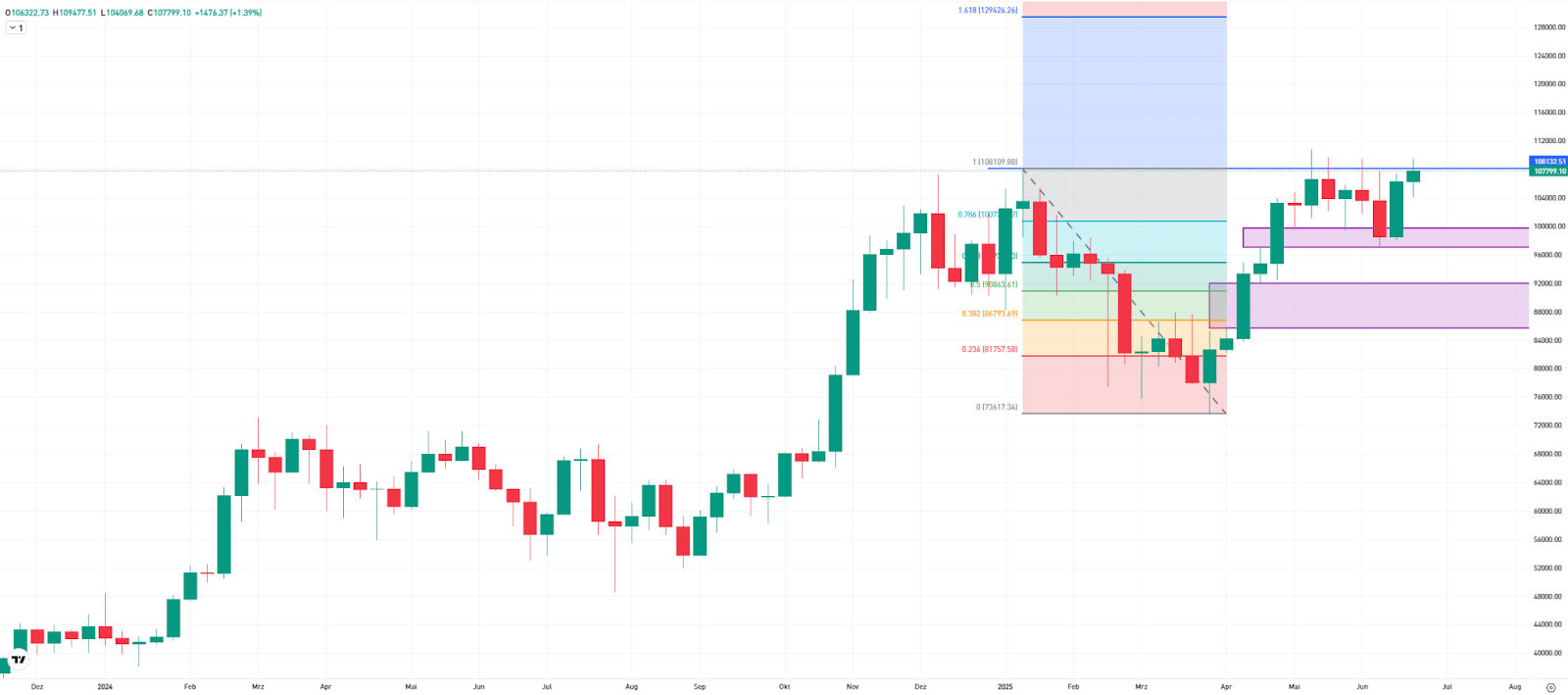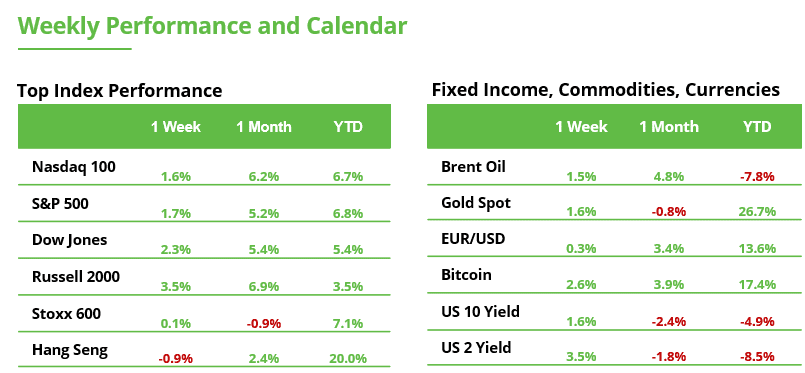Analyst Weekly, July 7, 2025
Tax Reconciliation Bill Passed: Core Implications
The tax reconciliation bill (nicknamed the One Big Beautiful Bill, or OBBB) was passed and signed by President Trump on July 4, with the Senate needing a tie-breaking vote by VP Vance.
The bill includes:
- 100% immediate expensing for capital investments
- Full R&D expensing
- Higher net interest deductibility
- Increased tax credit (from 25% to 35%) for semiconductor manufacturing investments beginning 2026
- An expansion of the Orphan Cures Act, shielding multi-condition orphan drugs from Medicare price negotiations
- A $5 trillion increase in the debt ceiling, allowing new Treasury issuance weighted toward short-term T-bills
Investment Takeaway:
- Positive for capex-heavy sectors: industrials, defense, chemicals, and telecoms benefit from full expensing.
- Semiconductors (equipment makers and fab-heavy firms) stand to gain from the enhanced manufacturing tax credit.
- Pharma/biotech firms with orphan drug pipelines benefit from the expanded pricing exemption.
- Treasury market impact: Emphasis on short-duration issuance (20% → 30% T-bill share) favors lower interest cost but increases rollover risk – supportive of the short end of the curve over long bonds
Companies that benefit from multiple provisions of the tax bill include:
- Industrials & Materials: UPS (UPS), International Paper (IP), Northrop Grumman (NOC), General Dynamics (GD), Lockheed Martin (LMT)
- Pharma/Biotech: Pfizer (PFE), Vertex (VRTX), Novartis (NOVN-CH), Amgen (AMGN), Illumina
- Chemicals: Celanese (CE), Dow (DOW), LyondellBasell (LYB)
- Telecom/Media: AT&T (T), Verizon (VZ)
- Consumer & Staples: Altria (MO), Yum! Brands (YUM), Tyson Foods (TSN)
Rising Tariffs, Shifting Supply Chains: Vietnam as a Test Case and North America as a Trade Winner
Contrary to popular belief among some investors, recent US trade deals are not leading to lower tariffs. Instead, the Trump administration is locking in a universal 10% tariff floor, with country-specific rates that are often significantly higher. In particular, Asian countries are being targeted due to their proximity to China and the administration’s focus on curbing transshipment, the practice of routing Chinese goods through third countries to avoid direct tariffs. This approach is aimed at enforcing stricter rules of origin and closing longstanding trade loopholes.
The new US-Vietnam trade deal illustrates this policy in action. Vietnam will face a 20% tariff on most of its goods and a 40% rate on goods imported from China and then shipped to the US This deal also exempts US goods from Vietnamese tariffs, underscoring its asymmetric nature.
In contrast, Mexico and Canada are emerging as beneficiaries of the administration’s trade policy. Both already comply with stringent rules of origin under USMCA and face no universal tariff, creating a widening cost advantage over Vietnam. This may accelerate onshoring and supply chain migration closer to the US.
While Vietnam has yet to confirm the tariff details, the policy framework now has clear boundaries, offering some certainty to Vietnam-exposed equities, which have underperformed since late 2024. India may strike a deal next, with diplomatic pressure mounting on Japan, where negotiations remain stalled. The early completion of the Vietnam deal is seen as a strategic move to influence talks with other key trading partners in the Asia-Pacific region.
In summary, a new deal with Vietnam:
- Raises tariffs to 20% on most Vietnamese imports
- Hikes to 40% on goods made in China and rerouted via Vietnam
- US goods enter Vietnam tariff-free
Investment Takeaway:
- Tariffs are going up, not down, even under trade deals. This is negative for multinationals sourcing via Asia.
- July 9 is the deadline for Trump’s new reciprocal tariff announcements, targeting tariffs above 10% starting August 1.
- Vietnam now serves as a test case for “rules of origin” enforcement to prevent tariff evasion via transshipment.
- Capital rotation toward North American suppliers: We see Mexico and Canada positioned as relative winners. These countries already comply with stricter origin rules under USMCA and avoid the new tariffs.
- Industrials and logistics firms with exposure to US-Mexico/Canada trade may benefit from trade re-routing and supply chain onshoring.
Bitcoin on the Verge of a Breakout? This Week Could Be Crucial
This week could turn out to be one of the most important for the entire crypto market in the second half of the year. Bitcoin has recently approached its all-time high, which was set in May at $110,872.
Above this level, there are no clear technical reference points on the chart. However, tools like Fibonacci extensions can still provide guidance. The next potential price target is near $130,000, based on the 161.8% retracement of the recent correction.
As is well known, price action in the crypto market can move quickly. But only a clear breakout above the record high would significantly improve the chances of reaching this next target.
Thanks to the sharp rally since April, several support zones—so-called Fair Value Gaps—have formed below current levels. The first of these zones lies between $98,000 and $100,000. This area was successfully defended three weeks ago and may act as a support again.
If this zone fails to hold, however, a pullback toward the $86,000 to $92,000 range could follow.
Bitcoin, weekly chart

Capital Allocation Dilemma: Structural Strengths of Europe and the US
Where should I invest my money – in Europe or the US? Few investment topics have sparked as much debate in 2025. Many investors remain uncertain. So far this year, European equity markets have outperformed their US counterparts. The STOXX Europe 600 is up 7.6%, compared to a 5.9% gain in the S&P 500. The lead is narrow, but that’s only half the story.
Currency effects add another layer of complexity. Since the beginning of the year, the US dollar has lost around 14% against the euro. For US investors with European holdings, that’s created a significant boost in returns. Conversely, the weaker dollar has eroded profits for European investors in US assets. From an international perspective, the weaker dollar might actually appear attractive, acting like a built-in discount for stocks.
Structurally, Europe is more defensively positioned, less growth-oriented, but offers higher dividend yields on average. In contrast, the US is driven by innovation, easier access to venture capital and lighter regulation. In an environment that favors growth, the US may have the edge, especially with megatrends like artificial intelligence and robotics.
Long-term investors looking to diversify broadly can hardly avoid allocating to both regions. It’s less about “either-or” and more about getting the weighting right. On a stock-by-stock level, there are also growth opportunities in Europe and attractive dividend plays in the US.


Don’t invest unless you’re prepared to lose all the money you invest. This is a high-risk investment, and you should not expect to be protected if something goes wrong. Take 2 mins to learn more.
This communication is for information and education purposes only and should not be taken as investment advice, a personal recommendation, or an offer of, or solicitation to buy or sell, any financial instruments. This material has been prepared without taking into account any particular recipient’s investment objectives or financial situation and has not been prepared in accordance with the legal and regulatory requirements to promote independent research. Any references to past or future performance of a financial instrument, index or a packaged investment product are not, and should not be taken as, a reliable indicator of future results. eToro makes no representation and assumes no liability as to the accuracy or completeness of the content of this publication.






